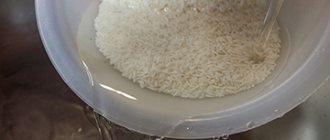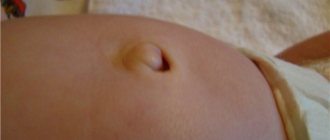Grandmother's advice on how to increase breast milk lactation using folk remedies
When a baby is born, he becomes the main concern of the young mother. All her thoughts are only about not harming, but, on the contrary, improving the condition of the newborn. And a particularly common concern is an imaginary lack of milk. There are many traditional methods, but you can learn how to increase breast milk lactation using folk remedies and make a choice about what to use.
Special gymnastics for the pectoral muscles
Its task is to ensure a rush of blood to the vessels located in the mammary glands, thereby promoting the activation of milk production processes.
It is enough to perform the given exercises 10-12 times, 2-3 repetitions in the morning and evening.
Swing your arms from side to side
We stand straight, feet shoulder-width apart, arms spread to the side.
We begin to simultaneously bring and spread our arms in front of us.
Kneeling push-ups
We stand upright on our hands and knees and do push-ups.
How to understand that there is not enough milk
Often, a lack of milk is just a far-fetched, imaginary problem. Usually parents and relatives are guided by the baby’s behavior. If he is whiny, often asks for the breast and hangs on it for a long time, this does not mean at all that he is hungry. Perhaps something hurts him, he doesn’t like the environment around him, or simply a thread got into the intercutaneous fold and bothers him. And he uses his mother’s breast to calm down, because she has such a warm and familiar smell.
These signs indicate that a child is malnourished:
- Small weight gain. Usually after birth the baby loses some weight. He should finally reach his birth weight by two weeks. But if this does not happen or the monthly intake is too small, control weighings are done before and after feeding. They also monitor the dynamics for two weeks with daily weighings.
- Count the number of peeings. A newborn should pee at least 12 times a day. To do this, you should not wear a diaper for at least one or two days.
- Rare and small stools are also an indicator of underfeeding. Also, inclusions of green mucus are an indicator of the so-called “hungry” stool.
These are real criteria for a lack of breast milk. If there are at least 1 - 2, then you should contact your pediatrician or lactation consultant so that you can be advised of some kind of treatment.
There are times when there is no milk at all. This is called hypolactation. It can be primary and secondary. In the first case, it is not the arrival of milk from the very first days. And in the second - a sharp disappearance of milk.
Less than 3% of women suffer from hypolactation, so don’t panic. It must be treated under the supervision of doctors.
Herbs for all problems
If the reason for the lack of milk is problems with the digestive tract, it is recommended to brew anise or caraway seeds; tinctures of dill and fennel are useful.
For young mothers who are tired of lack of sleep and a tight schedule, lemon balm and oregano are recommended. It is better to avoid mint, because it worsens lactation.
Women with anemia and physical exhaustion benefit from nettle decoctions, pomegranate and beet juice, but provided that the child accepts such supplements normally.
Tip: For the herbal tincture to work, you must drink the drink regularly, twice a day or more often. But if there is no effect after 2-3 doses, it is recommended to try another plant.
Delicious and healthy cocktail
- Grind the walnut kernels (100 g of product is enough for 2 servings). Heat milk or cream; it is advisable to use natural and not store-bought raw materials. You will need 250 ml.
- Pour hot liquid over the dry ingredient and leave for 20 minutes. When the drink has cooled down a little, you can add a spoonful of honey.
- To prepare healthy nut butter, the products should not be infused, but simmered over low heat, adding 30 g of sugar.
- Stir the ingredients so as not to burn, remove from the stove when the mixture thickens. Drink 50 ml three times a day.
General tips for lactation
Any doctor or consultant, when a nursing mother approaches a problem of how to increase lactation, will immediately tell you to pay attention to your diet. It should be complete and nutritious, but it should not contain a huge amount of calories. Since the extra calories will remain on the mother’s sides, and not on the baby’s cheeks.
So forget the old rule of “eating for two.” You need plenty of protein, the right carbohydrates and some fat. In this case, the food will be of high quality, and there will be enough for the baby and mother. The mother's diet must include:
But you should forget about smoked meats, sweets, foods that can cause allergies, and fast foods.
Be sure to drink clean, still water. A nursing woman should take at least 2.5 liters of fluid. However, this volume does not include dairy products and juices.
A newborn should be fed on demand. He will build his own daily routine, but first you need to adapt to each other, teach the baby to suck properly, and find the correct and comfortable feeding positions for the two of you. Night feedings are especially important in the development of milk lactation. From 3 to 8 am is the time to set the milk volume for the whole day. Therefore, try to feed at least once during this period.
It is also necessary to hug and hold the baby in your arms as often as possible. All the “horror stories” about him being tame are just myths. Once he learns to walk and crawl, he won't need it. And now he needs the warmth and care of his mother.
There is no need to worry, because various stress and depression can cause milk loss. Mother needs peace.
Her only concern should be the newborn. Therefore, consult with your husband about what household responsibilities he can take on while the child is still very small.
Solutions to the milk shortage problem
Drinking regime.
This is always important, but especially now. There is a direct relationship between the amount of milk produced and the amount of liquid drunk.
This fact has not been scientifically proven, but reviews from nursing mothers and my personal experience confirm this.
Therefore, we will drink a lot. Every two hours, 400–500 ml of liquid.
To avoid nausea at the sight of a mug, provide yourself with variety in your drinks.
Popular drinks during breastfeeding:
- Bottled still water.
- Mineral carbonated water (it’s a myth that gases will supposedly get into the milk and the baby will have a tummy ache).
- Black, green tea, with safe herbs (chamomile, lemon balm) can be served with milk and sugar.
- Dried fruit compote (1 cup of dried apricots, prunes, dried apples or pears, raisins in 4 liters of water, bring to a boil, cook for 20 minutes over low heat).
- Fruit juice from berries is preferably homemade and not very concentrated (1 glass of frozen or fresh berries per 4 liters of water, heat, but do not boil, brew at 80-90 degrees for about 30 minutes).
In order to provide yourself with variety, it is recommended to alternate drinks and not overuse one. For example, in the morning we drank tea with milk, then compote, then mineral water, etc.
Night is no exception in this regard. Therefore, it is worth getting a capacious thermos with a volume of about 1 liter, in which in the evening you can prepare unsweetened tea, a herbal infusion (so as not to develop caries) or ordinary warm water, and do not forget to actively drink when prolactin is produced - as we remember - the night hormone responsible for for lactation.
Folk remedies for lactation
Folk remedies for improving lactation include various herbs, infusions, decoctions, juices and much more. Most often, a young mother learns about them from the older generation. These are the pieces of advice worth heeding. After all, these recipes have been collected not even over years, but over centuries.
The main folk remedies for increasing lactation are decoctions and infusions of herbs. The following herbs help:
- raspberry leaves;
- fennel;
- nettle;
- field alfalfa;
- thistle;
- caraway;
- chamomile;
- dandelion and others.
Apart from increasing milk supply, these herbs have many other positive qualities. In particular, raspberry leaves help the uterus return to normal after childbirth, and thistle treats postpartum depression.
Medicine for breastfeeding
Medicine also does not stand still and is thinking about how to improve lactation. Many drugs have been invented to increase milk production. The most famous are “Apilak”, “Femilak” and “Laktogon”. Since they are plant-based and uterine-based, they are harmless to the baby’s health.
You can try homeopathic remedies. "Mlekoin" is one of those medicines that is recommended to mothers. But before choosing any of the drugs, consultation with a specialist is necessary, as they can cause allergies or food intolerance.
In addition, if there was no particular need, then these drugs and remedies will unnecessarily increase hot flashes, and then you may have to undergo treatment for lactostasis, which can turn into mastitis. The latter can only be treated surgically.
It is clear that any mother is worried about making sure her baby is well-fed. But the main thing is that in order for this excitement not to be passed on to the baby, he needs a calm and confident mother. If you don’t get nervous and worry too much, but feed your baby on demand and eat well, then the baby will have enough food. But herbal teas will not cause harm. They have a pleasant taste and aroma and have positive properties. And other folk remedies have practically no contraindications. So, enjoy using them to increase your milk supply and you will have nothing to worry about.
Source
We increase breast milk lactation with folk remedies
During the period of breastfeeding, mothers are frightened by many prohibitions on medications. A good half of the first aid kit, and often almost all of its contents, turns into a taboo. That’s when traditional medicine becomes the first assistant for mommy. But not all methods are suitable for a nursing woman. Today we will talk about how you can increase milk lactation using folk remedies.
Mother's milk is the baby's only food for at least 6 months. This is too long not to think about the quality of the process and not improve lactation if required. The fact is that a child receives through breast milk the entire complex of nutrients and vitamins he needs for harmonious development. Therefore, every mother must provide the baby with all the conditions so that his nutrition is complete. But sometimes some mothers don’t have enough milk. This is where folk remedies for increasing lactation will come to the rescue.
"I don't have enough milk"
This is exactly the statement you can hear from many mothers. And without a doubt, it is one of the most common experiences a woman has during breastfeeding. But often these are just mother’s speculations that have no basis in reality. Therefore, before highlighting the folk remedies with which you can increase lactation, let’s consider the signs by which it is easy to recognize whether there really is a problem with a lack of milk:
- Insufficient weight gain may be a cause for concern. But this reason is relative: each baby is individual and may gain almost no weight in one week, but in the following days gain more than that, and such unevenness will be absolutely normal. Take into account the baby’s condition: if he is sick or feels unwell, it is logical that he will not gain weight so rapidly. Therefore, the optimal weight gain indicator would be an increase per month.
- If you notice a decrease in the daily volume of breast milk, this will most likely indicate insufficient lactation.
- The restless state of the baby can be the cause of many phenomena. It is also a signal to the child that his mother’s milk is not enough and he is not getting enough.
- A healthy baby who receives enough nutrition in the form of breast milk during the first months of life urinates at least 6 times a day, and the urine is either pale yellow or colorless. If this is not the case, think about whether your child has enough milk.
All of these reasons together should prompt you to think about whether hypogalactia is occurring and, if present, look for ways to increase breast milk production.
Complete emptying of the chest.
Try to stick to one breast at a time, and make sure it is mostly empty at the end. If you had to feed two and there was milk left in the second, you will have to use a breast pump and empty it.
I recommend using a breast pump. Is it possible to express by hand? Only as a last resort, because this way the ducts in the mammary gland are released evenly and painlessly. With manual expression, this is almost impossible to achieve, and you can end up with lumps, cracked nipples and mastitis. I’m already silent, it’s incredibly painful and takes a lot of time.
Why pump? Nature is smart and prudent. If milk remains in the breast after feeding, this is a signal that there is a lot of it. As a result, the body reduces its production. Therefore, during a difficult period, it is important to ensure that the chest remains empty.
Causes of the problem
When a mother becomes convinced that lactation is reduced and feeding becomes inadequate, she is always concerned about the reasons for this unpleasant phenomenon: what did she do wrong? But the woman is not always involved in the situation: sometimes hypogalactia is provoked by external factors. Among the possible causes, doctors identify the following:
- The quality and quantity of breast milk is directly affected by the completeness of the mother's nutrition. A woman must consume a full range of vitamins and nutrients, otherwise her milk supply will decrease.
- Stress and lack of sleep are a mother’s frequent companions during the first months of her child’s life. Many women perceive them as absolutely natural processes characteristic of all mothers. Meanwhile, this is a huge harm to the body, which reacts with hypogalactia.
- Mom's milk factory operates according to a simple law: the higher the demand, the higher the supply. This means that the more often the baby suckles at the breast, the more milk is produced. If you combine breastfeeding with formula or avoid feeding at night, you will most likely encounter less milk.
- Sometimes only an endocrinologist can open his eyes to the cause. There are diseases of the thyroid gland, which are accompanied by insufficient production of breast milk.
- Even some medications can provoke the phenomenon. Culprits may include diuretics, androgens, and progestins.
- After some time, you and your baby should develop a feeding routine. The rules can be dictated by the child, who will ask to eat at a certain frequency. And sometimes the main one in this matter is entrusted to the mother, who decides to feed the baby “by the hour.” But if the regime goes astray, the lactation process may also be disrupted.
The most common causes of decreased lactation
True hypolactia - insufficient milk production by the mammary glands is extremely rare; it is caused by serious hormonal disorders in a woman’s body.
In the vast majority of cases, the reasons why nursing mothers have less milk are quite easily eliminated. The most common of them:
- lactation crisis;
- physical and psychological fatigue;
- poor nutrition and insufficient fluid intake;
- introducing complementary foods too early;
- lack of commitment to breastfeeding;
- breast diseases - mastopathy.
What is a lactation crisis
A lactation crisis is a periodically occurring decrease in the amount of breast milk, occurring several times during the entire lactation period. This condition usually lasts no more than 3 days and is associated with the baby’s increasing need for food, to which the mother’s body does not have time to respond quickly, or due to improper organization of the feeding process.
During this period, you should not give in to panic and try to immediately introduce complementary foods or, even worse, transfer the baby to artificial formula. This can lead to complete loss of milk. A nursing mother has enough resources to cope with the crisis naturally.
Correct menu
Most health problems can be eliminated by carefully reviewing your diet. And if you came to this page in search of methods on how to quickly increase breast milk lactation using folk remedies, we advise you to start with the menu. Often, these measures to get rid of the problem are limited.
- The most important criterion for a proper diet for a nursing mother is a sufficient amount of fluid. To improve lactation, you need to drink at least 2 liters of water or herbal tea daily.
- The leaders in the list of products that increase the amount of milk will deservedly be milk and fermented milk foods. Their daily norm is 1 liter.
- Separately, in the “dairy kitchen” we would like to mention cottage cheese. Eat 150 g of product per day.
- You should definitely include 200 g of lean meats in your daily menu. The task code-named “increase lactation” will be handled perfectly by weak meat broths or soups.
- The quality of lactation is also affected by the mother’s love for hard cheeses. The daily dose of the product is only 30 g.
- It is known that any nutritious diet necessarily includes a sufficient amount of fresh vegetables and fruits. Mom's diet, of course, will be no exception: make sure to include 300 g of fruits and 500 g of vegetables in your daily menu.
- Don’t forget about oils: the amount of butter is 20 g per day, and vegetable oil is 25 g.
But all these dietary adjustments will be useless if you consume:
- alcohol;
- products - strong allergens (in particular chocolate, nuts, citrus fruits, caviar);
- in excess of foods high in carbohydrates (for example, bread, sugar and confectionery);
- hot spices.
Never forget that everything your mother eats will certainly end up in breast milk. Therefore, love the products from the first list, and exclude the “pests” from the second list from your menu.
People's Doctor
If the diet does not help or you think that this is not enough, it makes sense to pay attention to folk remedies to improve lactation. We have listed the most popular and safe methods to help a mother who is faced with this problem.
- Regular carrots can increase lactation. This miracle property of the vegetable is due to its ability to produce prolactin. So, to prepare an effective folk remedy, grate a medium-sized orange root vegetable. Dilute the gruel with a glass of milk or half a glass of cream. The resulting medicine can be used 3 times a day.
- Among the folk remedies for increasing lactation you can always find cumin. It is used to prepare an effective drink. Just pour 1 tsp. plants with a glass of boiling milk. Let the product brew for 2 hours and drink it 20 minutes before meals.
- Dill can also increase the amount of breast milk. To prepare the infusion, pour 1 tbsp of boiling water into a glass. l. crushed dill seeds. The infusion time for this recipe is also 2 hours. The dosage of the product is half a glass, and you need to drink it twice a day.
- The popular fennel infusion is prepared in a similar way. In this recipe, you also need to pour a tablespoon of the plant with a glass of boiling water and let the product brew for 2 hours. After this time, the infusion should be filtered and taken 2 tbsp. l. before meals 3 times a day.
- The list of folk remedies for lactation would be incomplete if we did not tell you about a week-long course of treatment using chamomile flowers. The recipe is very simple: pour 1 tbsp. l. plants 200 ml. sweet boiling water. Drink a glass of the product 3 times a day for a week.
- If you are reading our article during the summer season, you can use an excellent folk remedy - dandelion leaves - to increase lactation. Pour boiling water over them or place them in cold water for half an hour: this will relieve the plant of unwanted bitterness. Make a healthy salad using dandelion leaves combined with sour cream.
- Ordinary tea can improve breast milk production, and it doesn’t matter whether you like a black or green drink. The only mandatory conditions will be to add milk to tea and a low strength of the drink. Drink tea about half an hour before feeding.
Drinks for a new mother
It is imperative to maintain a drinking regime, because if there is not enough fluid in the body, it will not be able to produce the required amount of milk. The daily norm is from 2 liters, including soups, milk and other drinks. You can use a variety of herbs that enhance lactation.
English version
Brew weak black or green tea and add cow's, or better yet, goat's milk. Drink before and after feeding. You can sweeten with a spoon of honey if the child is not allergic to such an additive.
Orange assistant
We recommend carrot juice, which is consumed in its pure form or mixed with cream or milk to improve the taste. Twice a day, 100–150 ml. It is useful to add fruit or berry juices and natural honey.
There is another option for a carrot-milk drink that relieves stress and improves your mood.
- Peel the orange root vegetable and finely grate.
- Heat the milk, but it should not be too hot.
- Place 3 tablespoons of grated carrots in a glass.
- Pour in warm milk, leave for 15 minutes. If desired, add a spoon or two of honey.
- Drink in the morning, after waking up, and in the evening, going to bed.
A few more important recommendations
The problem of deteriorating lactation today is not new and not at all rare. But this also has its advantages: pediatricians have long developed several effective recommendations for mothers with reduced milk production:
- before feeding, massage the mammary glands clockwise with light stroking movements;
- A shower massage will also help activate and increase milk production: move from the nipple to the sides;
- breastfeed the baby at the baby's first request;
- do not take a night break: feeding at this time guarantees complete and high-quality milk production;
- Mom’s peace and happiness is another guarantee of healthy lactation;
- During feeding, provide skin-to-skin contact with the baby;
- Pay attention to special gymnastics for the mammary glands.
Frequent breastfeeding.
The best way to increase lactation is to stimulate the baby's nipple while suckling at the breast.
Now is just the period when you can let the baby literally hang on your chest. Right now, try to put off as much as possible all matters that require parting with the baby, spend as much time with him as possible.
If your baby is accustomed to a pacifier, eliminate it while solving the problem with milk supply. If he wants to suck, let him suckle.










